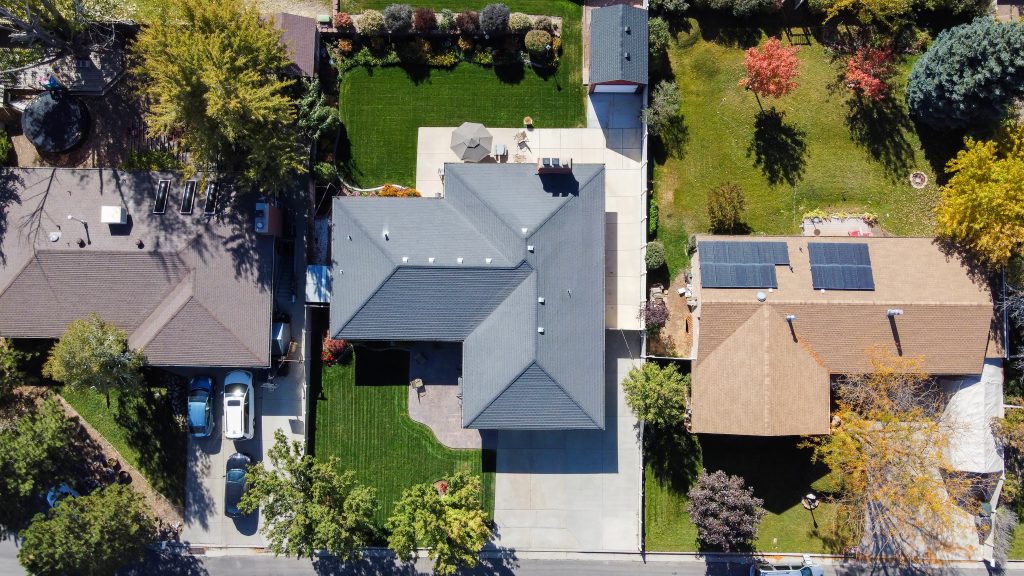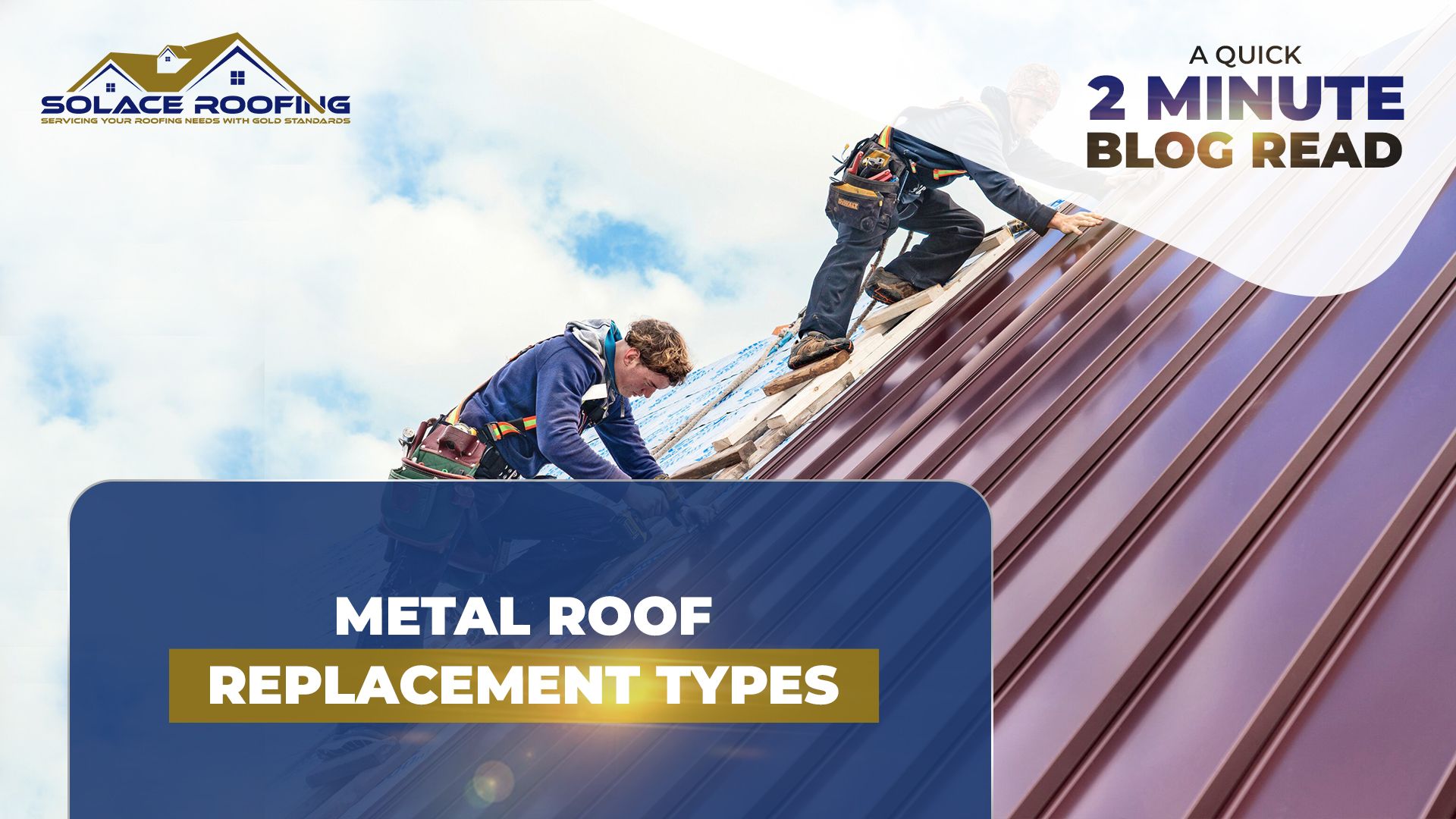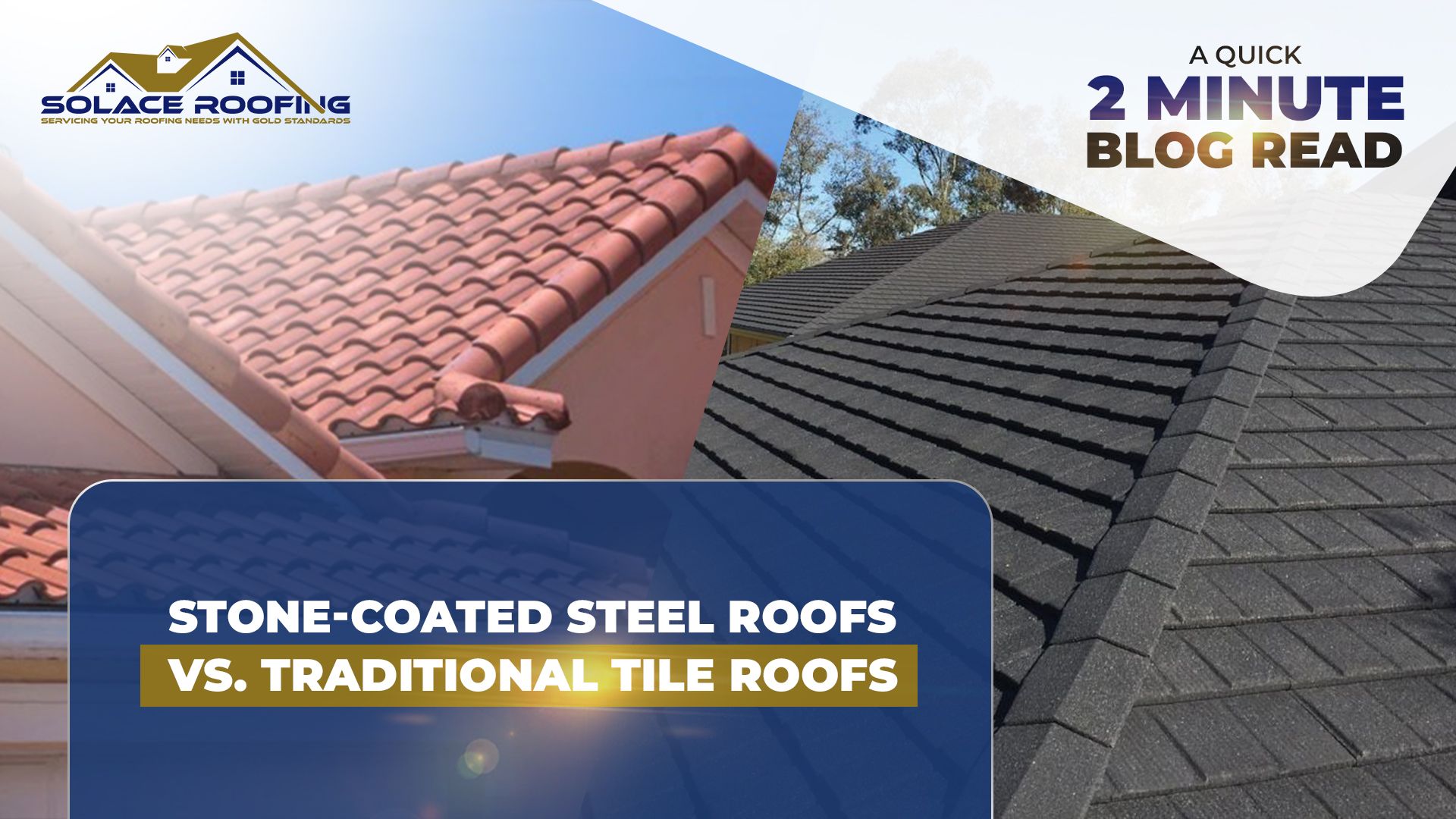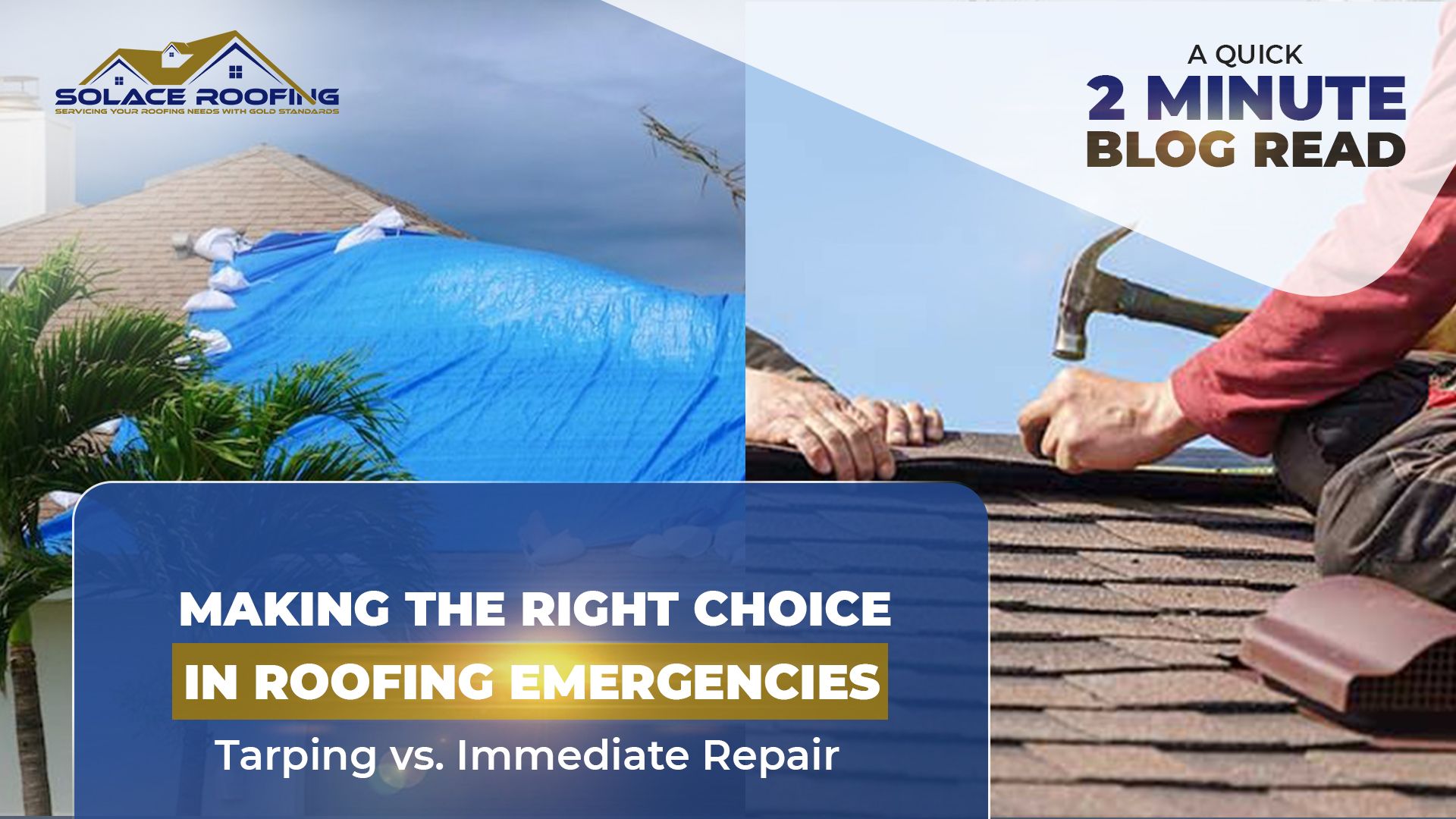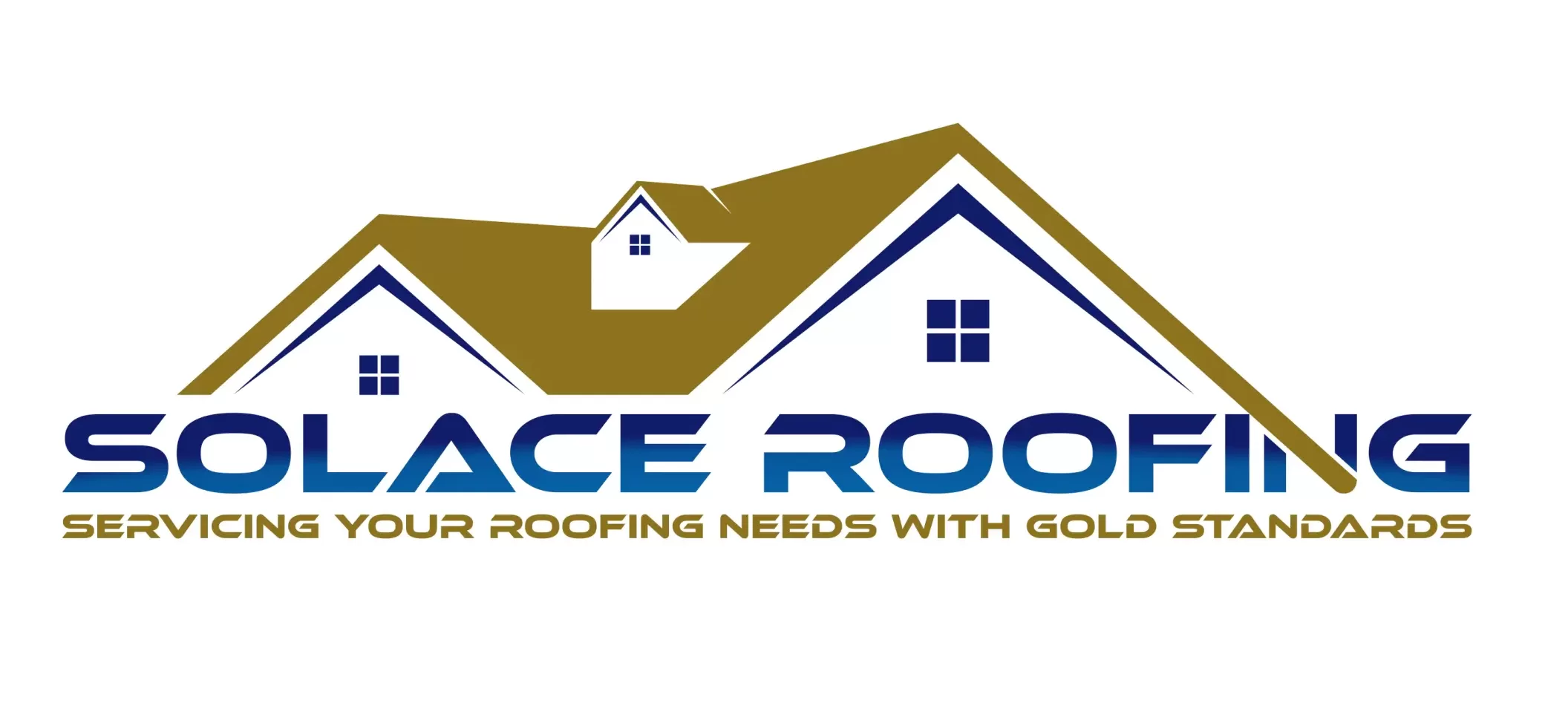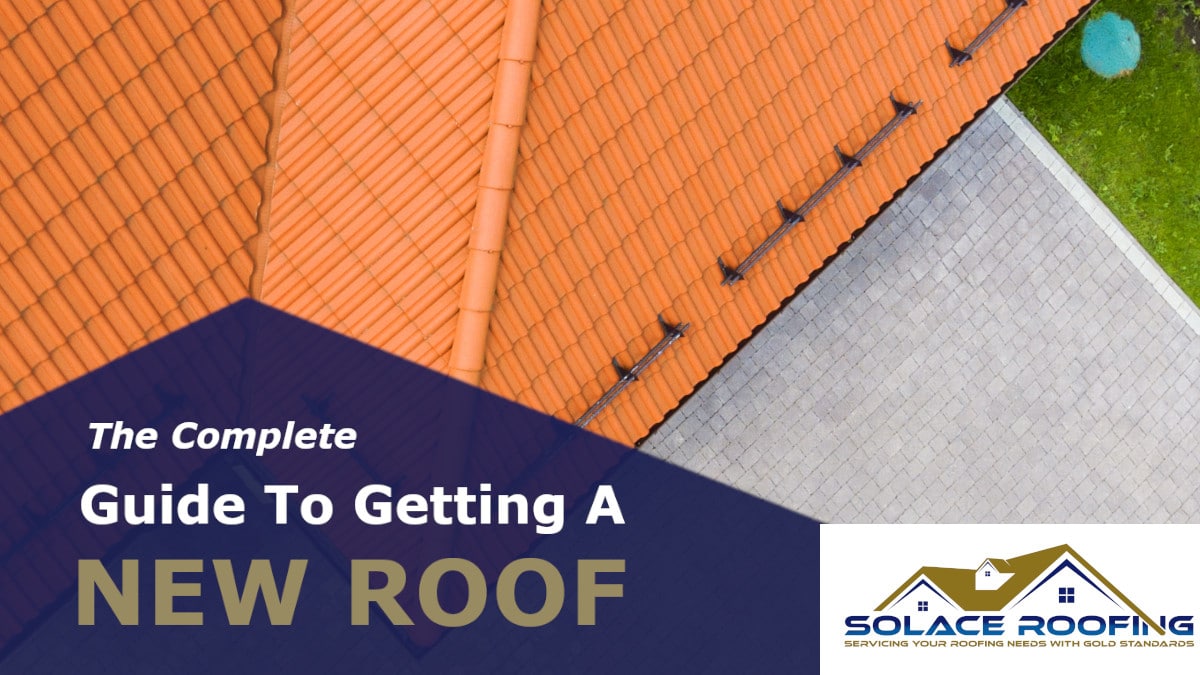
The Ultimate Homeowner’s Guide to Getting A New Roof.
Everything You Need To Know From Early Warning Signs – To Hiring A Reputable Contractor.
Welcome. It is our hope that by reading this guide you will know everything you need to in order to make a confident decision to keep your home safe and dry.
A new roof is a costly investment with practical and aesthetic implications – the roof is your home’s most important protection, against rain, snow, and natural elements. The roof can also significantly impact the appeal of your home in the eyes of potential buyers.
This guide will help you make an informed decision when it comes to re-roofing (adding a new layer of roofing to the existing roof) or removing and replacing the old roof.

Seven Signs You Need a New Roof
Here are the indicators that your roof should be re-shingled or replaced to maintain your home’s defense against the elements:
Shingles are visibly worn: Are there so many of the colored granules gone that your roof looks like it has bald spots? While the shingles might still be keeping moisture out, a lack of reflective granules allows excess heat into your home, raising the temperature inside your house and increasing your air conditioning costs. Furthermore, once exposed, the underlying asphalt will soon dry out and crack, and then your roof will be susceptible to leaks.
Shingles are cupped and curled:
This issue looks bad, but more importantly, it means wind-driven moisture can easily get under the shingles and into your roof deck where it might cause leaks and rot.
Shingles are cracked: The cracked areas aren’t keeping moisture off the deck, and the risk of leaks goes way up.
Your neighbors are getting new roofs: This is more than “keeping up with the Joneses.” When homes built about the same time as yours are being re-roofed, your roof is probably about due.
You’ve experienced multiple leaks: Your roof is an entire structure, not just the shingles. Deck paper, flashing, moisture barrier in valleys, starter shingles, vent stack boots, and other components are part of an entire roofing system. As the roof ages and several of its components or locations fail, the roof should be replaced.
The roof has experienced major damage: If more than about 35% of your roof is going to need repair due to wind or hail, especially if it’s already 12+ years old, the cost-effective decision might be to replace it all. Repair is more costly on a per square foot basis because it is more time-consuming to integrate new shingles into a roof “here and there” than to install them over the entire roof. Plus, a mix of old shingles and new ones just won’t look very good.
Your roof looks bad: Cosmetics and aesthetics do matter to homeowners and potential buyers. If your roof is worn, has algae staining, that won’t clean up or has patches of moss on it, boosting its appearance with a new layer of shingles will make a very nice difference.
If none of these reasons to get a new roof to apply, then you’re probably done here! If you’re not sure about your roof’s condition, hiring a roof inspector or roofing contractor to inspect it can be a preventative measure before a roof failure and the extensive and expensive damage it can cause.
Can I Put Another Layer of Shingles on My Roof?
Universal building codes allow for up to two layers of shingles on a roof, but there are times it would be better to tear off the single layer and start fresh:
- There is evidence of roof deck damage such as soft spots, sagging, or significant leaking that must be repaired.
- The flashing around chimneys, dormers, or an upper story is loose and/or allows leaks, so it must be replaced.
- The first layer is comprised of dimensional shingles with a high profile, so a second layer might appear lumpy.
- The combined layers would be too heavy for the roof structure, a problem in areas with heavy annual snowfall and when very heavy shingles (300+ pounds per square) are used.
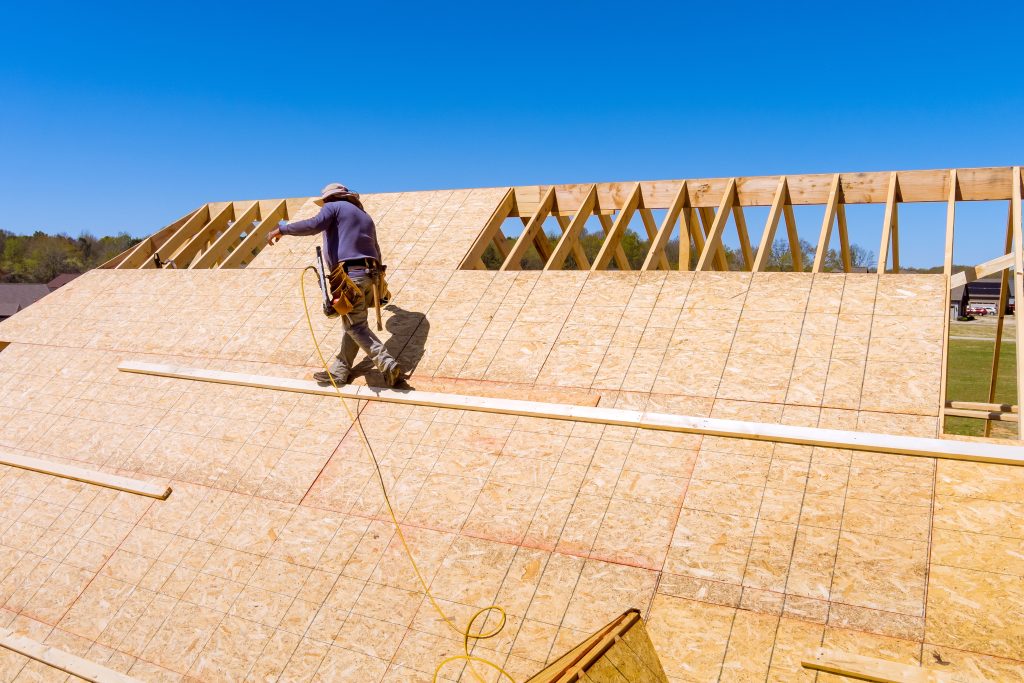
Roof Deck Repair Considerations
The roof decking is the layer of plywood or O.S.B. nailed to the trusses or rafters. Roof decking is typically 7/16” and comes in 4’x8’ sheets. If you’re tearing off old roofing, the roofer can look for damage that needs to be repaired once the deck is bare. replacing the decking is important if there have been any signs of decay, water damage, or warping due to moisture.
Roof Deck Prep and Repair
If you’re adding a second layer of shingles instead of tearing off the old ones, then a contractor or inspector should:
- Walk the roof to feel for spongy or flexing areas that indicate rotted or broken roof decking
- Look for areas where roofing nails are pulling out, an indication the wood beneath is soft and won’t hold the nails securely
- Examine the underside of the roof deck from inside an attic, where possible, to look for damage or staining caused by leaks
- Look for mold or rot on the underside of the roof deck indicating that moisture levels in the attic are high because the attic isn’t properly vented, a problem addressed later in this article
Tearing off and replacing roof decking or roof sheathing costs between $1.50 and $3.25 per square foot, based on whether all or just select sheets need replacing.
Roof Deck Underlayment – The Last Line of Defense
Roof Underlayment installed over a stripped roof deck
What’s fastened to the roof deck before shingles are installed will impact how well the entire roof structure can resist moisture. There are several components of good underlayment: General roof deck protection, moisture barrier for valleys and eaves, and starter shingles along the eaves.
Here’s a look at each:
Basic underlayment: This is the rolled material that is installed horizontally starting at the eaves. Each successive layer should overlap the last one by at least two inches on roofs with a 4:12 pitch and steeper. There are several types and grades of underlayment.
Asphalt: Asphalt-saturated felt (good) and asphalt-saturated felt with fiberglass reinforcement (better) is made in two grades; #15 (called 15 pounds) paper weighs about 8-12.5 pounds per 100 square feet, while #30 paper is thicker and weighs roughly twice that. Most pro roofers suggest using #30 paper because of the superior protection and the fact that using it increases the total cost for most homes by less than $250. More expensive and less common types of asphalt underlayment are rubberized asphalt and modified bitumen (mod-bit or mod bit) underlayment that is used in extreme conditions such as in very hot climates.
Synthetic: The trend in roofing is toward synthetic underlayment. It costs two to three times more than asphalt products but offers many advantages. It provides superior moisture resistance as the roof shingles age. Some synthetic underlayments are also breathable, so moisture in the attic can evaporate out of the home rather than being trapped which it will cause rot and mold issues. Mostly made from polypropylene or polyethylene, these polymers are also lighter, more resistant to tears, skid-resistant, and cooler in the heat, so are easier to work with.
Components of an Asphalt Roofing System
Moisture and Ice Barrier AKA Ice and Water: A large volume of moving water flows through valleys where roof sections come together. The water can easily wash underneath shingles.
That’s why valleys should be lined with and protected by a moisture barrier that covers each side of the valley by 12-16 inches. Many roofing contractors in climates with freezing winter weather also like to install a layer of moisture barrier at the eaves where ice dams might form.
Starter strip or shingles: All roofers install a row or starter shingles or rolled shingle material at the eaves as an added measure of protection against wind-blown moisture and ice dams. In high-wind areas, some contractors also prefer to install starter shingles or strips at roof rakes, the edge of the vertical run of the roof from the eaves to the peak on sections that form a gable.
Roof Ventilation is Essential to a Durable Roof
Excess moisture and heat in the attic quickly destroy roofs. Moisture gets into your home’s attic from everyday activities like taking a shower, boiling water and running a humidifier. If that moisture can’t get out of the attic, it will cause havoc such as molded insulation, rotted roof deck, and premature shingle deterioration. Heat causes shingles to cup and curve. It dries out the asphalt and makes it brittle, so it cracks easily.
There are several key ventilation points in any attic that allow excess heat and humidity to be vented.
Ridge vent: Ridge vent always requires the presence of soffit vents. The decking on your roof has or should have, a gap at the peak. The gap should be covered by a ridge vent to allow heat and moisture to escape. The Ridge vent has a solid top and vents on the side. The ridge vent can be covered with cap shingles that won’t block the vent opening.
Soffit vents: Perforated soffit is the easiest way to get ventilation at the soffit. If your soffit (the area under the eaves) is solid, then individual vents should be installed. Soffit vents are mainly useful in allowing fresh air to enter the attic to displace moist and/or warm air. Note: Make sure that the soffit vents are not covered with attic installation.
Gable vents: These are especially helpful when the attic has two gabled sides where vents can be installed. Cross-breezes effectively move hot, moist air out of the attic.
Roof vents: Any home, especially large homes and homes with hip roofs, benefits from giving heat to other points of escape. Your roof vent options are passive vents, turbine vents, and vents with a fan installed to pull heat and humidity from the attic.
What Are The Main Roofing Options?
Asphalt shingles continue to dominate the roofing market. In recent years, metal has made the largest gains. Here are your options, their estimated market share, and a brief overview of each.
Asphalt shingles, about 75%: Fiberglass-reinforced asphalt shingles are offered in several styles to fit your budget and home’s appearance. Specialty options combat climate dangers your home might face.
Metal roofing, about 15%: Metal has durability advantages and new product styles that make it quite appealing.
Wood shingles and shakes, about 5%: This classic roofing material continues to have advocates that appreciate its natural beauty.
Clay, cement, and fiber cement tile, about 5%: Tile remains a popular option, especially in warm climates such as Florida and California, and fiber cement’s lightweight durability is making it the most popular type.
Single-ply/built-up roofing, about 3%: This is the best roofing option for low-slope and flat roofs.
Plastic or composite shingles, about 1%: These products mimic wood shakes and slate, but cost more and last longer. They’re less of a fire hazard too.
Natural slate, about 1%: Lasting 100+ years, natural slate is the epitome of luxury.
Asphalt Shingles Types and Features
Since asphalt (75% sloped roofs market share) and metal (15% sloped roofs market share) own such a large part of the market, we want to take a closer look at each.
Fiberglass asphalt shingles are offered in three basic grades:
(Basic) Three-tab shingles are the most affordable (not necessarily the best value) and deliver the classic look of a shingled roof
3-tab Shingle Roof on a House
(Better) Dimensional/ Architectural shingles feature a base layer with a top layer fused to it that is cut to resemble wood shingles and shakes
(Premium) Luxury Dimensional/Architectural shingles are built like standard dimensional but with more material and a higher profile that produces visual contrast and shadowing
Each type of shingle is available in an impressive range of colors. While the basic 3-tab shingles are only rated for 60mph-80mph wind uplift, architectural/dimensional and luxury shingles are rated for 110mph wind, but with enhanced installation techniques, the warranty can be boosted to 130mph on many architectural shingle lines.
Solar/heat resistant “cool” shingles, impact resistant shingles, and shingles treated to resist algae staining are worth considering if your climate conditions dictate. Most are dimensional shingles, but there are a few three-tab shingle options.
Popular Asphalt Shingle Brands
ATLAS, GAF, Owens-Corning, and CertainTeed are three of the most popular brands in the residential roofing market. Atlas is known for its quality and affordability with a great mix of warranties. CertainTeed shingles are known for their premium quality and comprehensive warranty. GAF shingles are known for their overall great value and a wide range of styles.
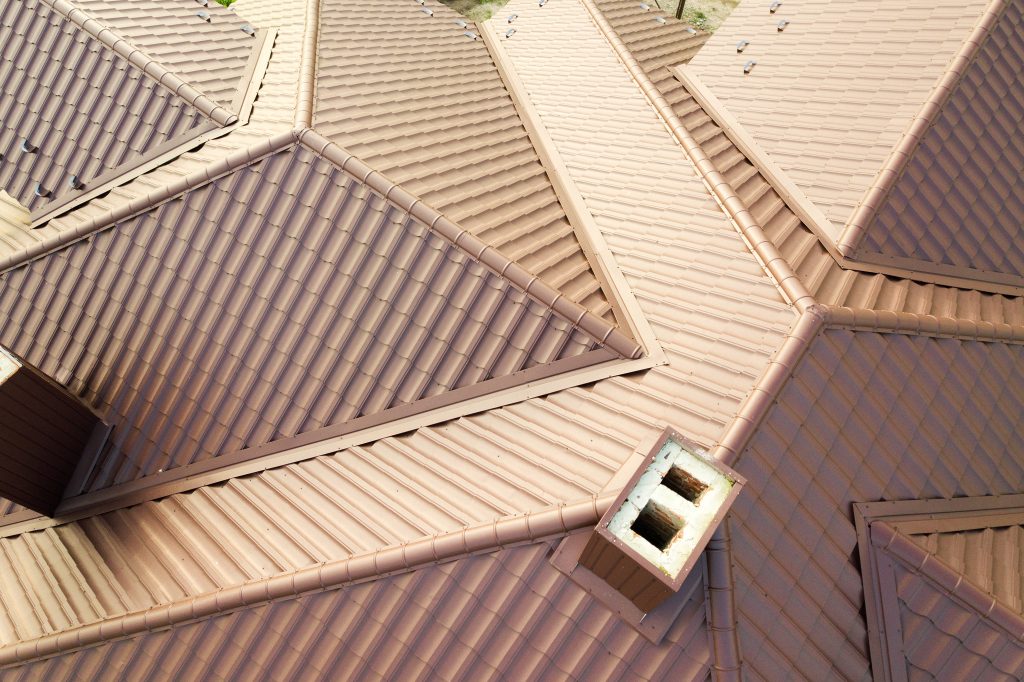
Metal Roofing Types and Features
Metal roofing has come a long way in the last few decades and now is a viable option for any house including upscale luxury homes. Here’s an overview of your options.
Standing seam metal roofing:
This is the most popular and pricey type of metal roofing. It can be rolled formed on the job site to reduce transportation costs and create a custom fit for every house. The purpose of the standing seam on these vertical roofing panels is to keep rainwater from penetrating them as it cascades off the roof.
Two popular types of steel standing seam are galvanized steel dipped in zinc and Galvalume steel dipped in a blend of aluminum, zinc, and silicon.
After steel, aluminum is the next most commonly used metal in roofing. Aluminum and zinc make for a great choice in coastal areas and heavy salt spray environments.
Metal shingles, shakes, and tiles:
Tamko MetalWorks Steel Shingle Profiles
Metal can also be stamped in sections about the size of asphalt shingles that resemble other roofing types including slate tiles, cedar shakes, asphalt shingles, and clay/concrete tiles. Granules can be added to these materials to reflect sunlight to help lower surface temperature.
Kynar 500 and Hylar 5000 paint finish coatings backed by a 30-year warranty are the industry standard for residential-grade metal roofs. Most metal roofing is steel, but aluminum, tin, and copper are options. Most metal roofs include at least 30% of recycled material.
Wind Mitigation Considerations in Hurricane Zones
The Gulf Coast states such as Florida, Louisiana, and Texas, and the Eastern seaboard of the US experience severe wind events including tropical storms and hurricanes. In these areas, it is essential that highly wind-resistant roofing be used. These tips will help:
- New metal roofs outperform most other types when properly installed
- Reduce or eliminate eaves and overhangs the wind can catch
- Asphalt shingles must be installed in accordance with installation instructions required to boost the wind warranty to 130mph
- Install all types of roofing exactly according to the manufacturer’s specs because improper installation is the top cause of blow-offs
- Choose a roofing contractor with a proven track record of installations that resist high winds
- If you haven’t built your home yet, ask an architect to suggest the most aerodynamic roof design, such as a hip roof, for your area and for how your home will sit on the property
How Much Does a Roof Cost?
There’s a wide range of costs for replacement roofs. Factors that affect cost include the type and grade of material used and the complexity of the roof including the slope and number of valleys it has. In general, new and replacement roofs cost less than average in the South and more than average in the Northeast and on the West Coast.
Costs are per square or 100 square feet of material (2020 averages):
Asphalt shingles: $350-$750
Metal roofing: $750-$1,500
Tiles: $800-$1,800
Cedar shingles and shakes: $750-$1,250
Plastic/composite shingles: $800-$1,250
Genuine or natural slate: $1,200-$2,000
Install Roof Shingles
$7,500 Average price
Install Metal Roof
$14,500 Average price
Install Flat Roof
$8,225 Average price
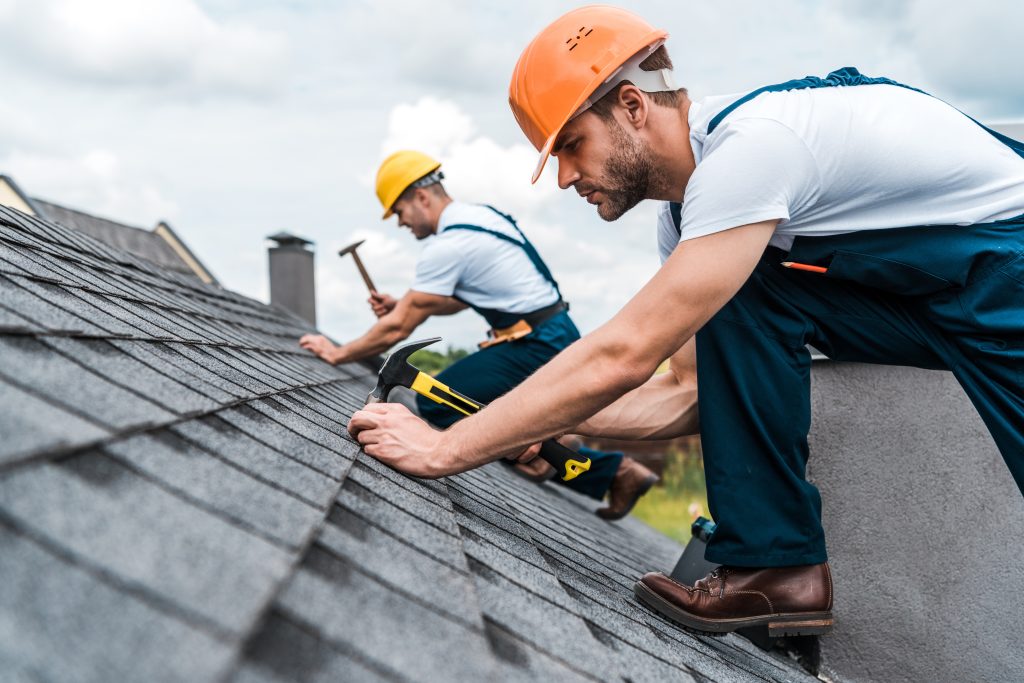
Hiring a Roofer
Do your due diligence when hiring a roofer, since the quality of the installation will have a major impact on the durability and appearance of the roof. At a minimum, the contractor/company must be licensed, bonded, and insured to protect you against liability or a job not properly completed.
From there, ask friends and neighbors who have recently replaced roofs questions such as:
- Does the roof perform as it should?
- Did the roofer start and finish the job on time and clean up the job site?
- Were there mistakes made?
- Did the roofer stay within the estimated cost?
Once you narrow your list, check BBB reports, Google, and Yelp reviews to learn about the roofers. Finally, get estimates from at least three local roofing contractors, and:
- Interview them about their experience installing the type of roof you’ve chosen
- Drive by roofs they installed 10+ years ago to see how they’re holding up
- See their licensing and insurance documents
- Ask whether they provide a warranty on labor to complement the material warranty, and don’t hire a contractor that doesn’t give a warranty of at least 12 months on labor
- Find out their time frame for starting and completing the work
Don’t let low cost be the only factor you consider, because the best roofing contractors in your area aren’t competing for the low end of the market
If you want to expedite the process, the free Get Local Prices service we offer can help. The roofing contractors are pre-screened for the important issues we’ve discussed, and they know they are competing with other roofers for the job.
What a Great Roof Looks Like and Being Sure You Get One
There are just a few keys to getting a new roof you enjoy now and one that serves you well in the years ahead:
- Before selecting material and specific color, look at a lot of houses, in person or online, to narrow your choices to what looks good on homes like yours
- Research the materials you’re considering by searching RoofingCalc.com to find articles on the material, costs, comparisons to, other roofing types, and even information on top brands
- Understand the warranties available for the roofing materials you’re considering
- Find a roofer using the tips above
Ultimately, the goals are to select quality roofing that looks good on your home, get competitive estimates from some of the best roofers in your area, and then get to know them and their work before making your decision.
If you are looking for a professional contractor to perform the work on your next roofing project consider Solace Roofing. Contact us today to get a free estimate.

